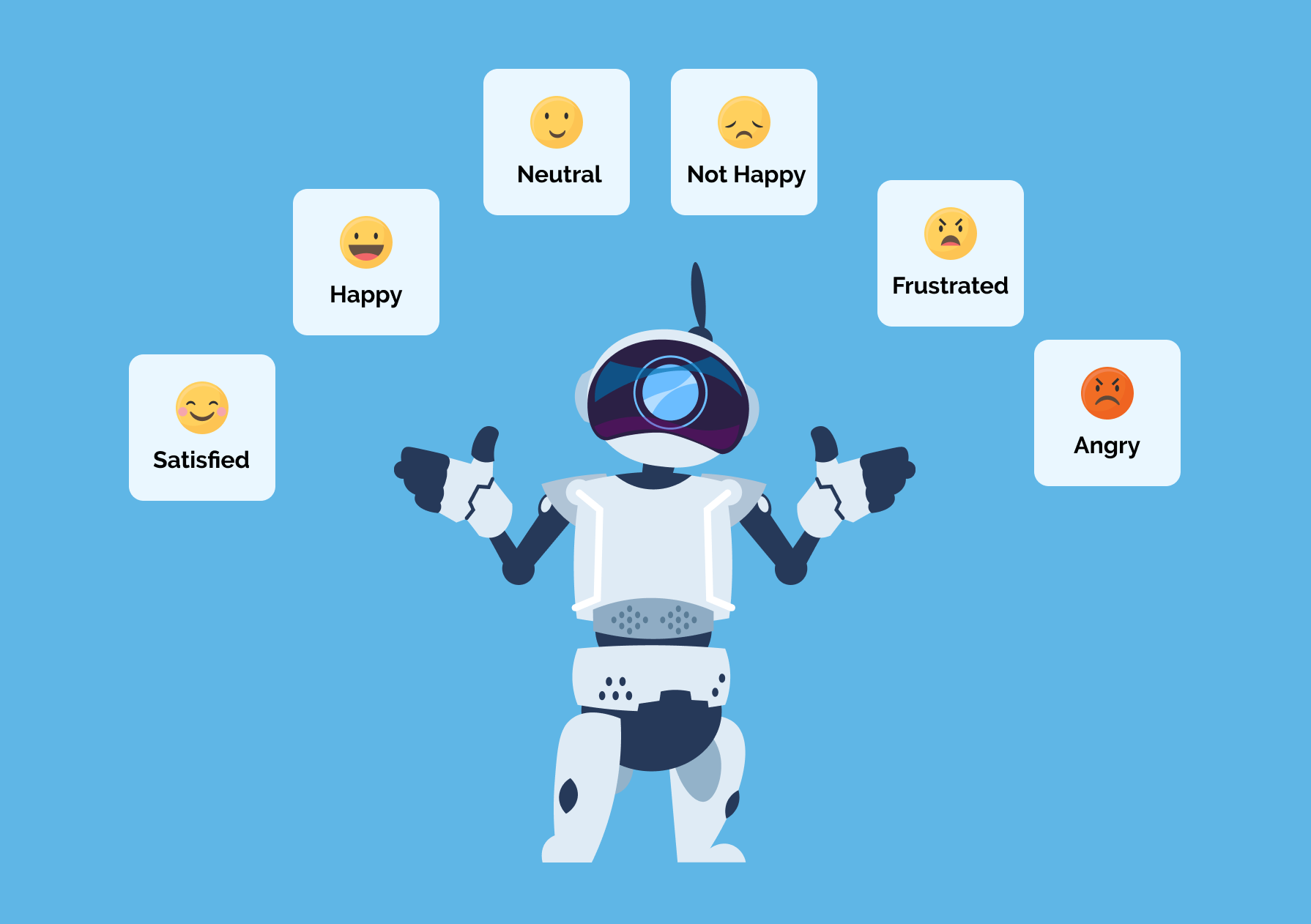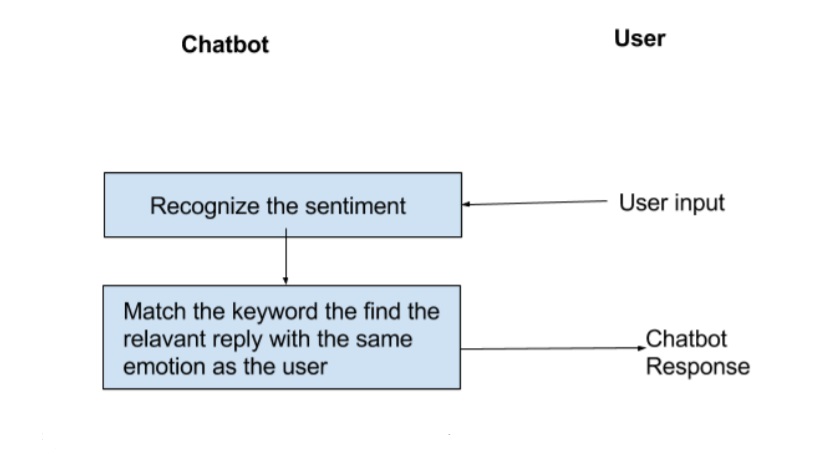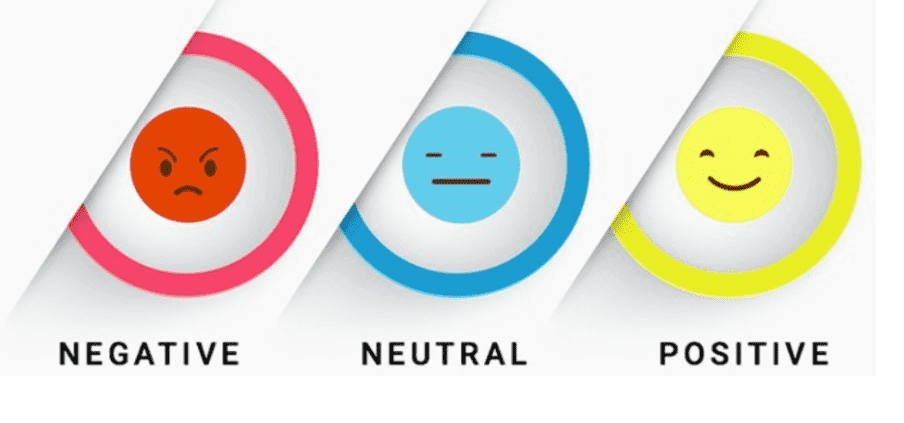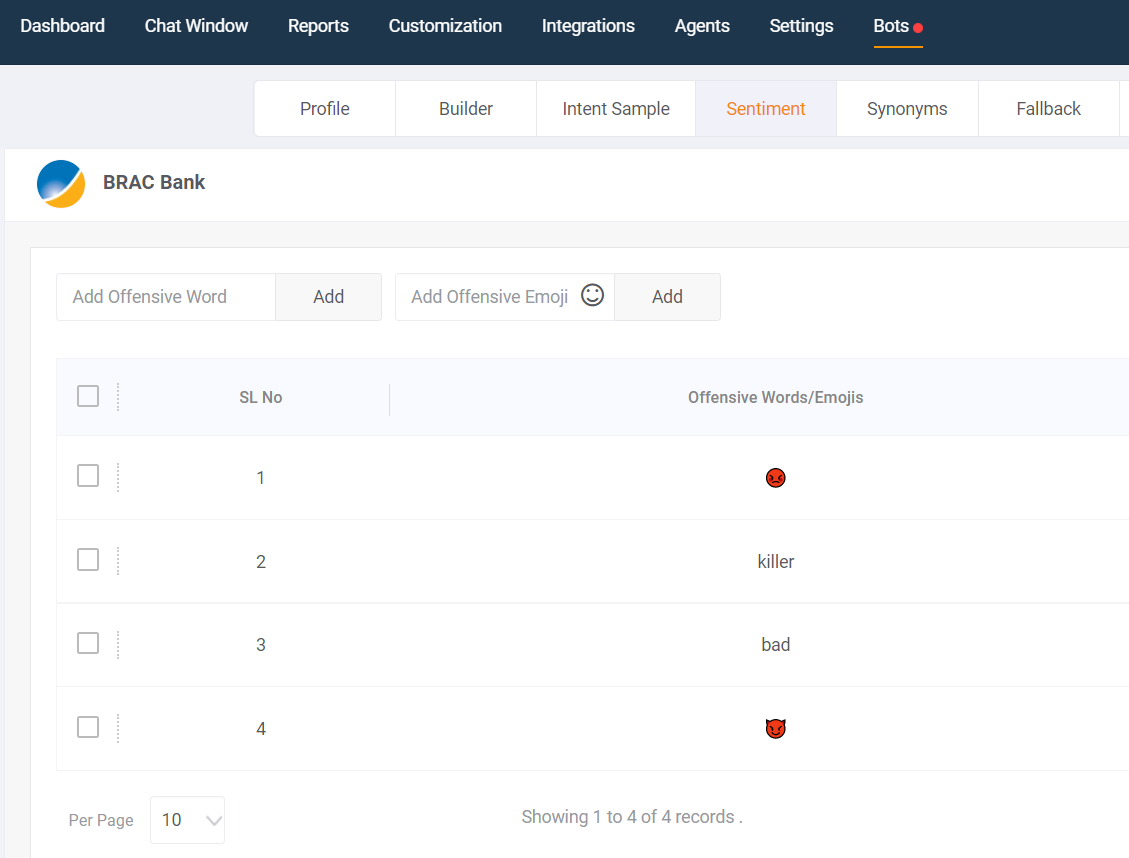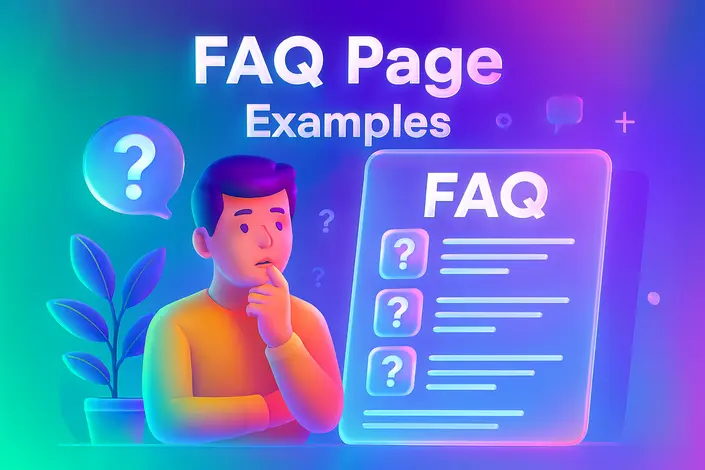How Chatbot Sentiment Analysis Boosts Customer Satisfaction
- August 11, 2021
- 11 mins read
- Listen

Chatbots are gradually becoming more sophisticated as they can now adapt to new AI features with ease.
You can also expect them to recognize user intent efficiently, decode the mood of users instantly, and drive the flow of conversations in tune with customer’s emotions.
And sentiment analysis is one such feature that makes bots even more powerful in terms of understanding the emotion in the customer messages.
In fact, 64% of businesses believe that chatbots can help them provide a more customized support experience for their customers.
You can always leverage the chatbot sentiment analysis feature to easily know if customers are having a good experience with your chatbots.
This is how AI-powered bots can help you engage customers better and improve their experience with your brand.
What is Chatbot Sentiment Analysis?
Sentiment analysis is a subfield of machine learning (ML) and natural language processing (NLP) that can help chatbots determine emotions from textual or voice data. It’s one of the key chatbot features that is used to analyze customer data by mining thoughts, opinions, or sentiments.
The use of conversational sentiment analysis enables a chatbot to understand the mood of the customer by sentence structures and verbal cues. Bots can use sentiment analysis to modify responses in tune with customer’s emotions and thus help segment the audience.
Benefits of Chatbot Sentiment Analysis
Chatbot sentiment analysis is a great way for businesses to understand the mood of customers by decoding verbal and sentence structure clues. Bots are not only able to handle happier customers themselves but can also route the unhappier ones to human agents to improve their overall experiences with your business.
Your business can implement conversational sentiment analysis in its chatbot design and benefit in many ways.
- Accurate response – Bots will be able to identify the mood of customers, find out whether the mood is positive, negative, or neutral. Based on that, you can offer accurate responses and delight customers.
- Lower customer support issues – AI chatbots can leverage machine learning (ML) and natural language processing (NLP) to assign numerical scores to emotions such as anger, happiness, frustrations, etc, and ensure relevant responses to customer issues.
- Superior experience to customers – The use of chatbot sentiment analysis can give your business an opportunity to understand the customer journey better and then provide the right responses to improve their experience.
- Empathetic service – Bots are now powerful enough to adapt to the mood of the customer and then drive the conversation accordingly, therefore enabling empathetic service for customers.
Tips to Use Chatbot Sentiment Analysis to Improve Customer Satisfaction
The effectiveness of sentiment analysis-powered chatbots can easily be leveraged to deliver a great customer experience. Your business can have many chatbot use cases where it can identify customers’ intentions and offer relevant answers quickly. This is how the overall experience of customers is enhanced with your brand.
Chatbot sentiment analysis can be used in different ways to improve customer satisfaction.
- Sentiment Categorization
- Adaptable Customer Support
- Seamless Agent Handover
- Insights From Social Media Conversations
- Product Recommendations
- Filter Customers
- Relevant Customer Conversations
Let’s discuss each of the ways in detail.
1. Sentiment Categorization
Sentiment analysis can help you do a more in-depth analysis of user comments and customer feedback to better understand the emotions.
What’s more, AI chatbots are able to analyze various words and their different elements such as plurals, tenses, adjectives, verbs, and verbs.
Based on such an analysis, it’s always easy to do a deft analysis of user comments and customer feedback.
When you do sentiment categorization, it allows you to understand how customers feel about your products, services, policies, or any other aspect of the business.
How does chatbot help in sentiment categorization?
- The bot will first identity sentiment types and understand if the emotions in the conversations are positive, negative, or neutral.
- You can easily grasp the intensity of the emotions and based on that assign a numerical score to each of the core emotions.
- Sentiment analysis can help in detecting a range of emotions such as happiness, anger, sadness, positivity, etc.
2. Adaptable Customer Support
Customers hate poor responses.
If the answers to their queries are not appropriate, they might feel frustrated, and who knows, may ditch your services and move over to competitors quickly.
To avoid this situation, you should leverage chatbot advantages and use sentiment analysis in conversational AI in an effective manner.
They can understand the user intent, tone of the messages and based on that, efficiently modify the responses to match with the customer’s emotions.
And when responses are accurate, it always ensures engaging experiences for customers.
How bot use sentiment analysis for adaptable customer support?
- Timely human handover – Bots can analyze the sentiments of conversations and can ensure timely human handover to live chat agents in cases where the mood of the customer is negative.
- Categorize customers – Based on the level of satisfaction, bots can categorize customers and ensure the most demanding ones get the extra care for a better experience.
3. Seamless Agent Handover
Without sentiment analysis, chatbots are never able to understand the tone or mood of the customers.
And when customers are not understood properly, it can impact the service and may lead to frustration.
On the other hand, customer service is greatly enhanced when bots are able to enable a timely escalation of issues to human agents.
Bots can always prove a great digital assistant with emotional intelligence if they can use sentiment analysis.
They can instantly pass on the conversations of angry customers to human agents and contribute to superior customer services.
When bots are not able to understand the customer query or where human intervention is needed, a well-defined fallback can help transfer the chat to the right human agent.
The fallbacks need to be defined for two scenarios:
- When the bot finds the query complex and
- When users prefer to interact with the support rep
Best practices in human agent transfer
- Give customers fallback options to exit the chatbot conversation or to speak to a live agent when there is urgency or for complex matters
- Use tags and variables to help the bot gather the user’s input and then send the data to the agent when the handover happens
4. Insights From Social Media Conversations
Unhappy customers often vent their displeasure over social media.
Even happy customers too use social platforms to make their feelings known to the world.
However, sometimes it’s not possible to understand how the audience feels about your products or services, and in such cases, chatbot business benefits are never fully leveraged.
Conversational sentiment analysis in social media can help you get information about customers’ perceptions and feelings.
Bots with the ability of sentiment analysis can quickly analyze posts, comments, status updates, any piece of text to know whether the mood is positive, negative, or neutral.
How to use chatbot sentiment analysis with social media posts?
- In the bot builder, first, transform the whole text into numbers so that the machine can easily understand it
- Assign numeric representations to similar words or sentences.
- Run the algorithm to know the final answer about the mood of customers.
5. Product Recommendations
Sentiment analysis in conversational AI can be used to identify the mood of customers and improve their experience. Based on the level of happiness or frustration, you can devise your product recommendation strategy.
Chatbots are able to respond accurately by adapting to the user’s mood and this feature can help a lot in recommending products to new or existing customers.
Similarly, sentiment analysis-powered bots are smart to avoid needless sales pitches and this saves you disgruntled customers.
Sephora on Kik chatbot is a good example of how to be deft with your product recommendation opportunities without being an in-your-face type salesperson. It never tries too hard with upselling and rather takes things gradually by asking a step-by-step question.
Best practices in using chatbots for product recommendations
- Use sentiment analysis in a way that makes your bot helpful and non-intrusive.
- Build the bot to first offer advice and then engage in any kind of upselling or cross-selling.
6. Filter Non-Value Customers
Not all customers would be equally important for your business.
Some would bring value while there will be some you may want to avoid due to various reasons.
Chatbots with sentiment analysis can help you filter customers based on the words, voice, or sentences used by them.
Similarly, the use of bots can prove very helpful by saving relevant information about the customers and showing them what truly matters to them.
This is how you can use data to get more targeted messages and be able to deliver personalized experiences as well.
Why filter customers using sentiment analysis?
- You can restrict the customers who use bad or offensive words and focus entirely on serving the ones that matter to your business.
- Support cost can be saved by avoiding the need to cater to customers that are not meant to benefit your business in any way.
7. Relevant Customer Conversations
Sentiment analysis-powered chatbots can be quite efficient when it comes to recognizing customer intent and driving the conversations accordingly.
When bots are built with sentiment analysis, they can easily understand whether the conversations are going well, and can also respond to customer emotions accordingly.
Such chatbots can decode words, sentences, phrases in a successful manner, and can also decipher the mood of customers and then ensure the conversations go as per intended.
Popular cosmetic brand CoverGirl’s influencer chatbot is a good example of how a chatbot with sentiment analysis capability can easily be smart, funny, and responsive. Apart from being able to identify customer intent, It has earned positive sentiments and can drive 17 messages per conversation.
How does sentiment analysis help drive conversations?
- Bots can deconstruct the comments on social channels, know the intent, and then come up with the right words or offers which can keep the conversations relevant to customers.
- Bots that are built with sentiment analysis can change their responses to sympathize with the emotions of customers as this can boost the experience.
- When the user sentiment is analyzed, it can always prepare the support team to be aware of issues beforehand and then take the appropriate action immediately.
Limitations with Chatbot Sentiment Analysis
Sentiment analysis can indeed make bots very powerful and enhance their capabilities in a huge way to ensure improved customer satisfaction. However, there are some limitations to it which is why the adoption of conversational AI is yet to go on a full scale.
Some of the limitations of bots sentiment analysis are;
- Sarcastic text – The use of sarcasm in texts can cheat the sentiment analysis models as bots always find it hard to successfully decode sentences that often carry negative meanings yet use positive words.
- Word ambiguity – Words may have different meanings depending upon the context or sentence, so the polarity of some words will always be hard for bots to decide using sentiment analysis.
- Multipolarity in sentences – Chatbot sentiment analysis fails to accurately understand the sentiment of sentences or documents that exhibit multipolarity and may fail to give a clear picture of what it denotes.
- Repetition – Bots sometimes can go on offering the same answers to customers even when the question is rephrased and this could happen in cases where the use of sentiment analysis fails to detect the query in a perfect manner.
- Lack of empathy – Chatbots for customer support can not empathize with a customer in the way a human agent does and even the best of sentiment analysis will never be sufficient to train the machine to respond to certain situations as a real person can.
Enhance Customer Experience with Adoption of Chatbot Sentiment Analysis
The adoption of artificial intelligence in general, and sentiment analysis in particular, has made bots quite advanced and capable of adding value to the support team. Now you can trust a machine to improve customer experience with your brand and redefine the meaning of support in a big way.
And if your bot is properly trained in sentiment analysis, it can even make the human agent redundant to some extent without allowing any adverse impact to customer experience. So, invest in ML and NLP to give your business the much-needed edge on the back of improved customer service.


